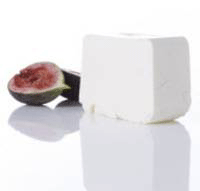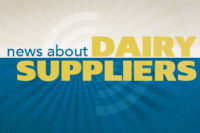The following information was prepared by Chr. Hansen
Reducing the carbon footprint in the food value chain—the greenhouse gas emissions from farm to fork—is a major focus area for modern food manufacturers, and many companies have Corporate Social Responsibility/sustainability (CSR) targets and actions in place to reduce their environmental impact.
 According to the Food and Agriculture Organization of the United Nations, the food sector contributes over 20% of global greenhouse gas emissions. Cheese ranks among the top 10 foods in terms of value chain carbon footprint – mostly due to the milk intake which has a footprint of 1.1 ton CO2 per ton of milk.
According to the Food and Agriculture Organization of the United Nations, the food sector contributes over 20% of global greenhouse gas emissions. Cheese ranks among the top 10 foods in terms of value chain carbon footprint – mostly due to the milk intake which has a footprint of 1.1 ton CO2 per ton of milk.
Collectively, dairies around the world produce more than 20,000,000 tons of cheese a year, according to the U.S. Dairy Export Council). Chr. Hansen calculates that if all cheese makers converted to using its Chy-Max M as their cheese coagulant, the result would be a total CO2 reduction of at least 1,250,000 tons of CO2, equaling the yearly greenhouse gas emissions from more than 83,000 Western European households.
Chy-Max M means increased cheese yield because cheesemakers use less milk to produce the same amount of cheese, compared to other types of coagulant. Exactly how big a yield increase and C02 reduction depends on the type of cheese.
To be specific, going from Chy-Max or another first generation fermentation-produced chymosin (FPC) to Chy-Max M will give a 22 to 54 kilogram of CO2 per ton of cheese reduction of the carbon footprint due to the proven yield increase. The shift from a microbial coagulant will save 39 to 146 kilogram of CO2 per ton of cheese, while moving from animal rennet to Chy-Max M will cut CO2 emissions by 38 to 70 kilogram per ton of cheese. Today, approx. 20% of all cheese is produced with animal rennet, 30% with microbial coagulant and 50% with FPC.
The mozzarella cheese example
For instance, an average producer of mozzarella cheese producing 20,000 tons of cheese per year who switches to Chy-Max M could save 1,200 to 1,500 tons of CO2 each year depending on the type of coagulant the producer uses today.
Rolando Saltini, Coagulants Marketing Manager, said the company offers a "CO2 calculator" for dairy customers who wish to get an overview of CO2 emissions associated with producing cheese with the different types of coagulants.

